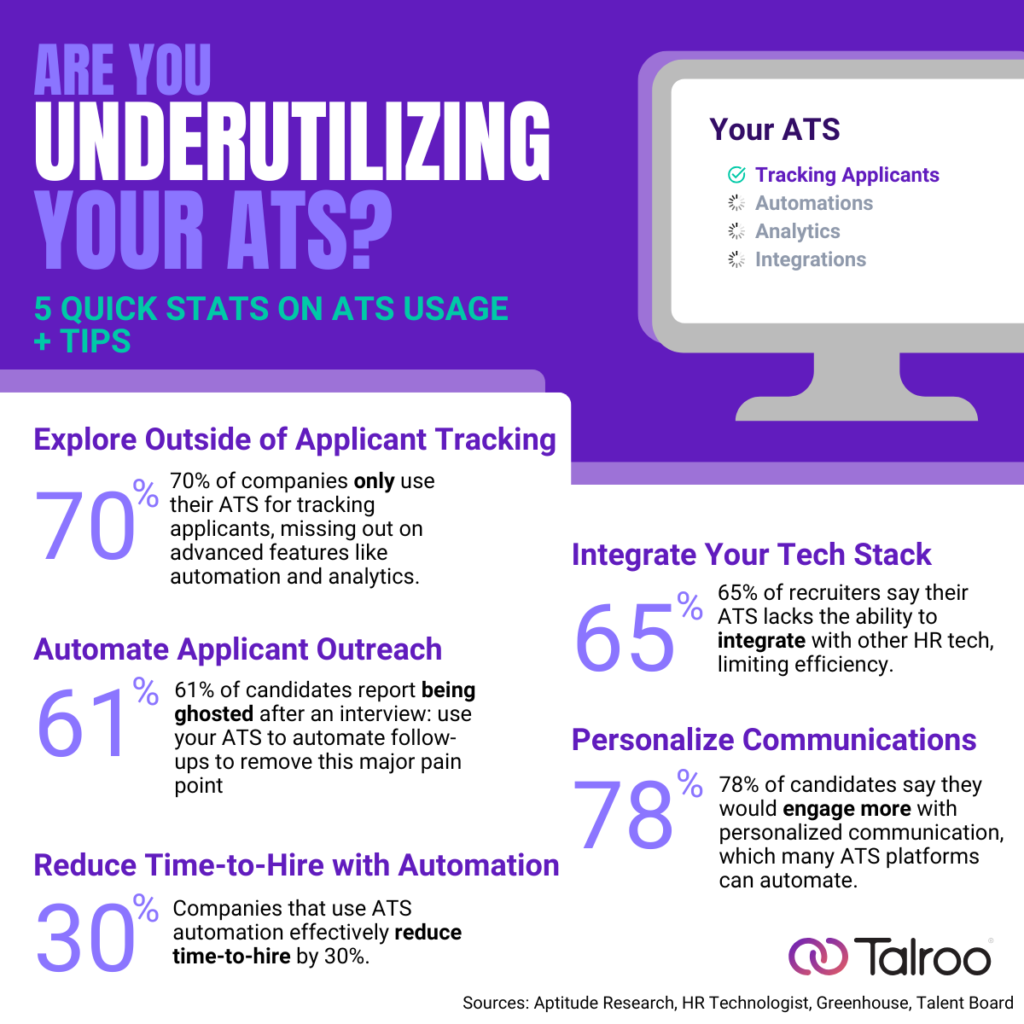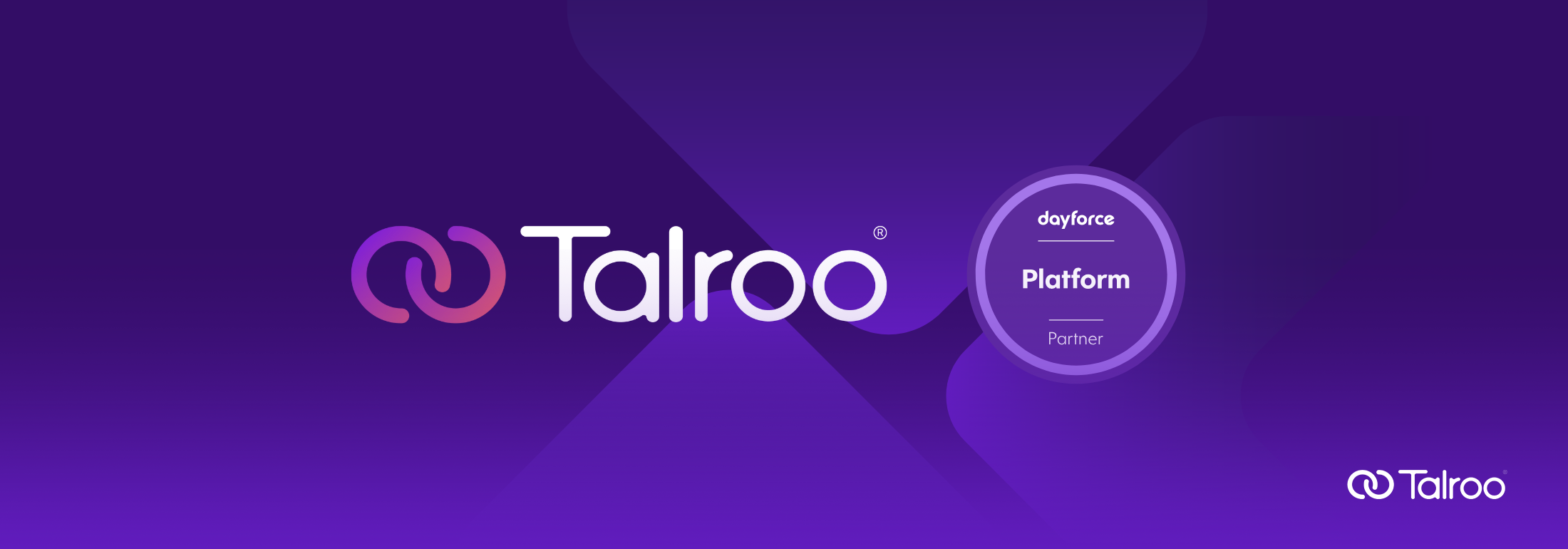
Many organizations invest in an Applicant Tracking System (ATS) with high hopes of streamlining their recruitment processes. However, once implemented, these powerful platforms are often reduced to little more than digital filing cabinets—used simply to track applicants through the hiring pipeline. This underutilization is a missed opportunity. Modern ATS platforms are designed to do far more than just store resumes and manage applications—they can actively enhance your recruitment strategy, boost candidate engagement, and power your business growth.
Here, we’ll explore how you can maximize the potential of your ATS by leveraging its full suite of capabilities. From automating processes and running hiring events to optimizing job ads and enhancing your employer brand, we’ll show you how to transform your ATS from a passive database into a proactive recruiting powerhouse.
1. Use Your ATS to Automate and Streamline Workflows
One of the most powerful yet frequently overlooked features of modern ATS platforms is automation. Automating routine and repetitive tasks reduces administrative burdens, improves efficiency, and allows your HR team to focus on higher-impact work and working person-to-person.
Automate Communication and Scheduling
Many ATS platforms offer automated email and SMS capabilities that streamline candidate communication. You can create pre-set email sequences for application confirmations, interview invitations, and follow-up messages. Automated scheduling tools can sync with calendars, allowing candidates to book interviews directly, eliminating the back-and-forth of manual scheduling.
Tip: A Greenhouse report found that 61% of candidates reported getting ghosted after an interview: use your ATS’s automated reminders to reduce interview no-shows by sending confirmation texts or emails 24 hours before the meeting.
Trigger-Based Workflows
Use your ATS’s trigger-based automation to move candidates through the hiring funnel seamlessly. For example:
- Automatically advance applicants to the next stage after they complete a skills assessment.
- Send personalized rejection emails when candidates are disqualified.
- Trigger background check requests or reference verification once an offer is accepted.
Related: How to Build a Talent Funnel with Automation
2. Leverage ATS Analytics to Inform Data-Driven Decisions
Most modern ATS platforms include built-in analytics and reporting features, yet many HR teams only use them for basic tracking. By digging deeper into the data, you can make smarter hiring decisions and optimize your recruitment strategy.
Track Key Hiring Metrics
Use your ATS analytics to monitor:
- Time-to-fill: Identify bottlenecks in your process by tracking how long candidates spend at each stage.
- Source effectiveness: Determine which job boards, social channels, or events bring in the highest-quality candidates.
- Tip: If you only see a couple of sources in your reporting, it’s probably time to diversify with more channels: you’re likely missing out on qualified candidates.
- Candidate conversion rates: Measure how many applicants move through each stage and where you lose them.
Identify Bias and Improve DEI
Your ATS data can also reveal potential bias in your hiring process. Track candidate demographics and compare the pass-through rates at each stage. If you notice disparities, you can identify areas where bias might be influencing decisions and make adjustments to promote more equitable hiring.
3. Use Your ATS for Job Advertising and Sourcing
Many ATS platforms integrate with job boards, social media platforms, and talent networks, allowing you to post job ads directly from the system. This capability streamlines your sourcing efforts and expands your reach without requiring separate tools.
One-Click Job Posting
Instead of manually posting jobs to multiple platforms, use your ATS’s one-click multi-posting feature. This allows you to distribute job ads across numerous job boards (such as Indeed, LinkedIn, or niche sites) directly from your ATS, saving time and ensuring consistency.
Tip: If you’re unsure which job boards are compatible with your ATS, check out Talroo’s list of ATS partners to see which platforms integrate seamlessly.
Leverage Programmatic Job Advertising
Some ATS platforms offer programmatic job ad capabilities, enabling you to target specific candidate profiles and adjust your spending in real time. This ensures you’re investing more budget into the platforms that generate qualified applicants, rather than spreading resources thinly.
4. Host Hiring Events Directly from Your ATS
Recruiting events such as virtual career fairs, open houses, or hiring days are excellent ways to engage candidates quickly. However, coordinating them manually can be chaotic. Many ATS platforms offer built-in event management features that help you streamline and automate the process. Many platforms also allow you to increase registrations and attendance with event ads to further boost performance.
Event Registration and Candidate Tracking
Use your ATS to create event landing pages where candidates can register and upload their resumes. During the event, track attendance, interview outcomes, and next steps—all within the ATS.
Automated Follow-Ups
After the event, use your ATS’s email automation to send follow-up messages, thanking attendees and guiding them through the next steps. You can also create talent pools from event participants for future roles.
5. Improve Employer Branding Through Your ATS
Your ATS can also help strengthen your employer brand by enhancing the candidate experience. From personalized communications to branded career sites, your ATS offers plenty of opportunities to make a lasting impression.
Optimize Your Career Site
Most ATS platforms allow you to customize and brand your careers page. Ensure that it:
- Reflects your company’s culture and values.
- Includes employee testimonials, photos, or videos.
- Is mobile-optimized and easy to navigate.
Tip: Use your ATS to regularly update job descriptions with inclusive language and clear expectations to attract a diverse candidate pool.
Enhance Candidate Experience with Personalization
Use personalized email templates within your ATS to create tailored communication. For example:
- Address candidates by name.
- Reference specific roles they applied for.
- Share relevant content, such as blog posts or company news, to keep them engaged.
6. Build and Nurture Talent Pools
An ATS isn’t just for managing current applicants—it can also help you build and nurture talent pipelines. Use your ATS to:
- Create segmented talent pools based on skills, location, or experience level.
- Set up automated nurture campaigns to re-engage past applicants with new job opportunities.
- Track passive candidates and flag them for future roles.
Tip: Use your ATS’s tagging feature to categorize silver-medal candidates who were a close fit for previous roles, making them easy to find for future openings.
7. Integrate Your ATS with Other HR Tech Tools
To get the most out of your ATS, integrate it with other HR tech solutions. Many platforms offer seamless integrations with tools such as:
- Video interviewing platforms (e.g., HireVue, Spark Hire).
- Onboarding software to transition new hires smoothly.
- Assessment tools to evaluate skills and fit.
By integrating your ATS with complementary technologies, you can create a more efficient and comprehensive hiring ecosystem.

Key Takeaway: Your ATS Can Be More Than a Tracker
Your ATS is more than just a database—it’s a powerful recruitment tool that can transform how you attract, engage, and hire top talent. By fully utilizing its automation, analytics, event management, and branding capabilities, you can streamline your processes, enhance candidate experiences, and ultimately drive better hiring outcomes.
If you’re not sure whether your current ATS is up to the task, consider exploring Talroo’s list of ATS partners to find a platform that offers the advanced features you need to power your business.



